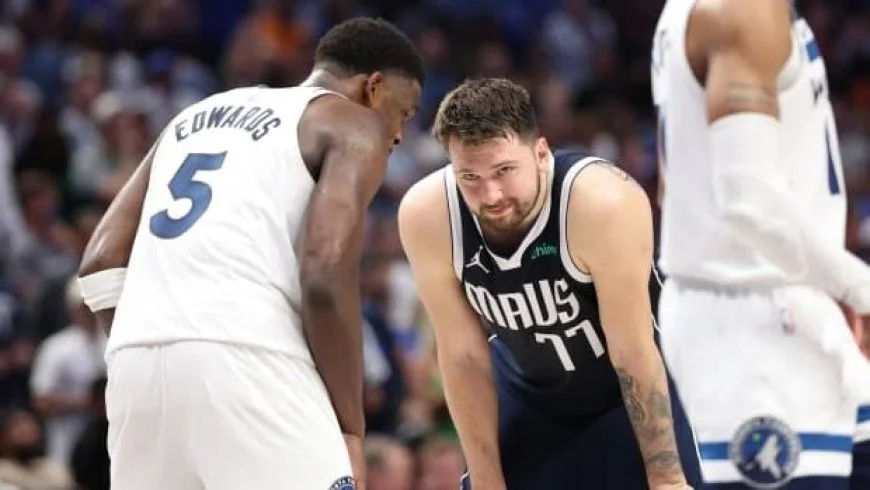Introduction
The NBA consistently delivers exciting matchups, but a game between the Minnesota Timberwolves and the Dallas Mavericks always promises high energy, skillful displays, and intense competition. Both teams bring star power and depth, with the Mavericks anchored by the prowess of Luka Dončić and the Timberwolves showcasing the talents of players like Anthony Edwards and Karl-Anthony Towns. This article delves into a typical Timberwolves-Mavericks matchup, highlighting individual performances, key player stats, and what each team needs to improve for future games.
Pre-Game Overview: Team Strategies and Expectations
When the Timberwolves and Mavericks meet, the focus often revolves around Luka Dončić and his playmaking for the Mavericks and the Timberwolves’ efforts to balance strong offense with a solid defense. The Timberwolves rely on their big men, like Karl-Anthony Towns and Rudy Gobert, to dominate in the paint and defend against Dallas’s strong shooting lineup. Meanwhile, Dallas looks to maximize Dončić’s scoring abilities, while relying on their versatile guards and three-point shooters like Tim Hardaway Jr. to keep the floor spread.
First Half: Early Momentum and Standout Performances
Opening Quarter
From the tip-off, both teams aim to set the pace, with Dallas often seeking to use Luka Dončić’s vision to find open teammates. Dončić consistently makes plays that lead to easy baskets, drawing in the defense and either driving to the hoop or finding open shooters on the perimeter. His court awareness and ability to read the Timberwolves’ defense force Minnesota to make defensive adjustments early.
Anthony Edwards typically takes on a lead role in driving to the basket for the Timberwolves. Known for his explosiveness and ability to score from difficult positions, Edwards keeps Dallas’s defenders on their toes. On the other hand, Karl-Anthony Towns often looks to establish his position in the post and take high-percentage shots from the paint, capitalizing on his height advantage.
Key First-Quarter Stats:
- Luka Dončić: 10 points, 3 assists
- Anthony Edwards: 8 points, 2 rebounds
- Karl-Anthony Towns: 6 points, 3 rebounds
Second Quarter
As the game progresses, Dallas’s perimeter shooting becomes crucial. Tim Hardaway Jr. often steps up with timely three-pointers, helping the Mavericks extend their lead or catch up if they’re behind. Meanwhile, Minnesota’s defense, anchored by Gobert, makes it challenging for Dallas to score in the paint. Gobert’s shot-blocking ability and rebounding presence force Dallas to rely on mid-range jumpers and three-point shots.
Towns and Edwards continue to push their offense on the Timberwolves’ side. Edwards shows versatility, switching between drives and perimeter shooting, while Towns uses his post moves and occasional three-point attempts to stretch Dallas’s defense. Their combined efforts keep the game close, with each possession becoming critical.
Key Second-Quarter Stats:
- Tim Hardaway Jr.: 12 points (3 three-pointers)
- Rudy Gobert: 6 points, 5 rebounds, 2 blocks
- Luka Dončić: 7 points, 4 assists
Second Half: Intensified Defense and High-Stakes Play
Third Quarter
The third quarter usually sees intensified defense as both teams aim to secure a lead. The Timberwolves focus on doubling Dončić, trying to limit his scoring and force turnovers. Dallas responds by increasing ball movement, allowing players like Hardaway Jr. and Reggie Bullock to get open shots. In a typical Timberwolves-Mavericks game, this quarter sees more fouls and physical play as each team tries to gain a mental and physical edge.
Gobert and Towns often combine to dominate the boards, limiting Dallas’s second-chance points and controlling the pace. On the other hand, Dallas’s defensive strategy focuses on containing Edwards, forcing him into difficult shots and preventing him from driving to the rim. As a result, the third quarter can be a low-scoring affair, with both teams focusing more on defense than offense.
Key Third-Quarter Stats:
- Luka Dončić: 8 points, 2 assists, 1 steal
- Karl-Anthony Towns: 7 points, 4 rebounds
- Reggie Bullock: 9 points (3 three-pointers)

Fourth Quarter: Clutch Moments and Final Stats
In the final quarter, both teams ramp up the intensity. This period often showcases Luka Dončić’s ability to perform in high-pressure moments. His clutch scoring, whether through step-back threes or drives to the basket, keeps Dallas within striking distance or helps them secure a lead. Dončić’s playmaking ability allows other Mavericks players to get open shots, putting immense pressure on Minnesota’s defense.
Anthony Edwards, known for his fearless style, frequently takes on the responsibility of scoring in the final minutes. Edwards’s scoring ability and confidence in high-stakes moments make him a key player for Minnesota, often closing the game with double-digit points in the fourth quarter alone. Towns also play a crucial role, especially in rebounding, while Gobert ensures that Minnesota’s defense remains challenging.
Final Key Stats:
- Luka Dončić: 36 points, 10 assists, 8 rebounds
- Tim Hardaway Jr.: 20 points (5 three-pointers)
- Anthony Edwards: 29 points, 6 rebounds, 4 assists
- Karl-Anthony Towns: 24 points, 12 rebounds
- Rudy Gobert: 12 points, 15 rebounds, 4 blocks
Statistical Comparison of Key Players
Analyzing the player stats from a Timberwolves-Mavericks matchup reveals the strengths and styles of each team:
- Luka Dončić (Mavericks): Dončić often leads the game in points and assists, showing his dual threat as a scorer and playmaker. His high assist numbers indicate how central he is to the Mavericks’ offensive structure.
- Anthony Edwards (Timberwolves): Edwards is consistently among Minnesota’s top scorers, especially in critical moments. His ability to score from different parts of the court, combined with his rebounding and defensive efforts, makes him a key player.
- Karl-Anthony Towns (Timberwolves): Towns’s double-doubles demonstrate his versatility as a scorer and rebounder. His ability to shoot from long range-adds an extra layer to Minnesota’s offensive strategy.
- Tim Hardaway Jr. (Mavericks): Hardaway Jr. often serves as a secondary scorer for Dallas. His accuracy from three-point range provides much-needed spacing for Dončić to operate.
- Rudy Gobert (Timberwolves): Gobert’s presence in the paint, reflected by his rebounding and shot-blocking stats, gives Minnesota a defensive anchor. His defensive contributions are crucial in limiting Dallas’s scoring opportunities near the basket.
Conclusion
The Timberwolves vs. Mavericks matchup is a showcase of talent, strategy, and resilience. Each game highlights the unique strengths of both teams. The Mavericks rely heavily on Luka Dončić’s playmaking abilities, with supporting players like Hardaway Jr. stepping up with timely shots. For the Timberwolves, Anthony Edwards and Karl-Anthony Towns provide scoring power, while Rudy Gobert’s defensive presence adds stability.
The outcome of these games often hinges on the ability of each team’s role players to step up when their star players are closely defended. In addition, adjustments in defensive strategy and offensive spacing play a significant role in deciding the winner. Both teams display the grit and talent required to excel in the playoffs, and each game provides fans with thrilling basketball action.
With both teams determined to prove themselves as contenders, every matchup between the Timberwolves and Mavericks is sure to be fiercely contested, leaving fans eagerly anticipating the next game. The high-level performances by star players and crucial contributions by their teammates make these games must-watch events for any NBA enthusiast.

